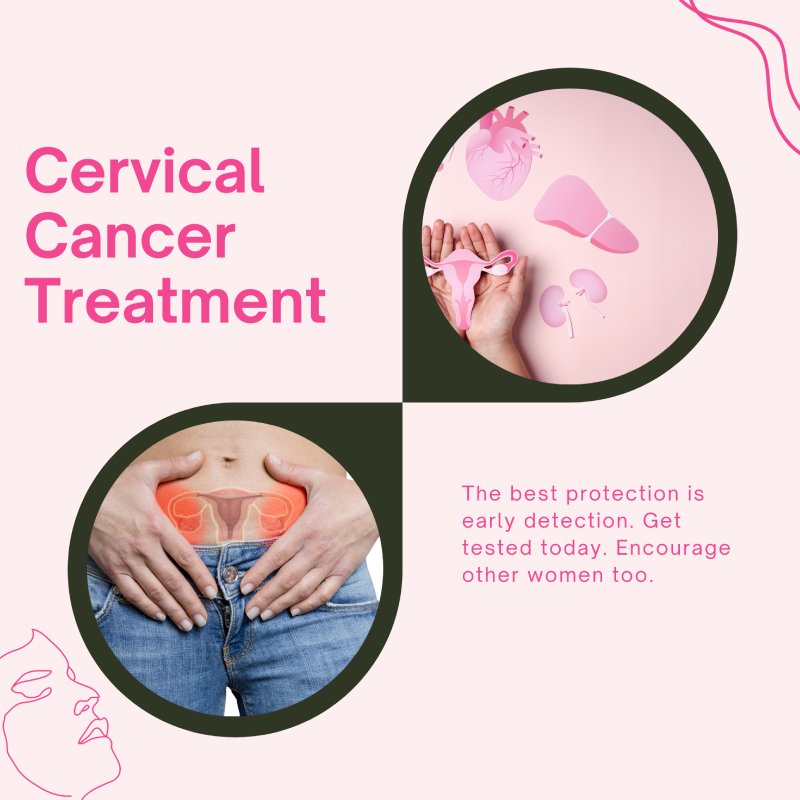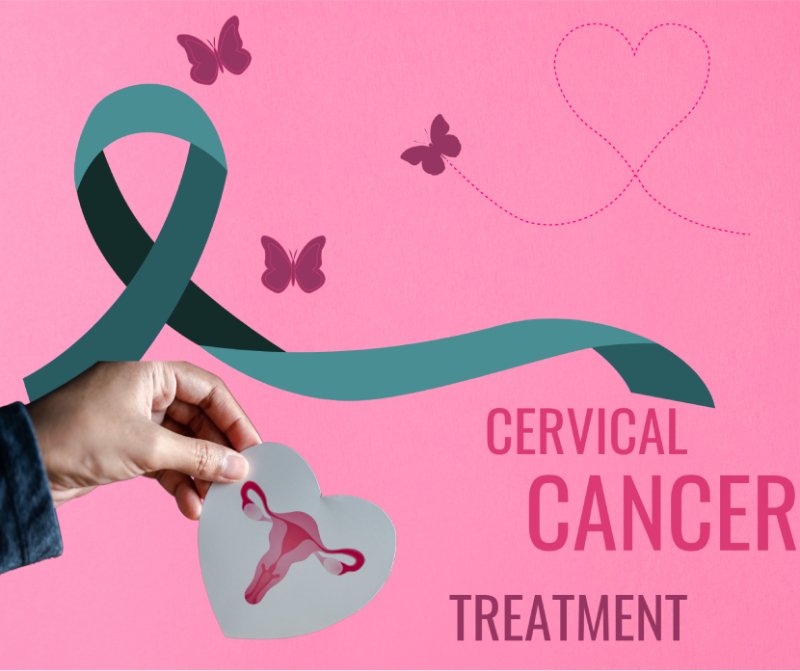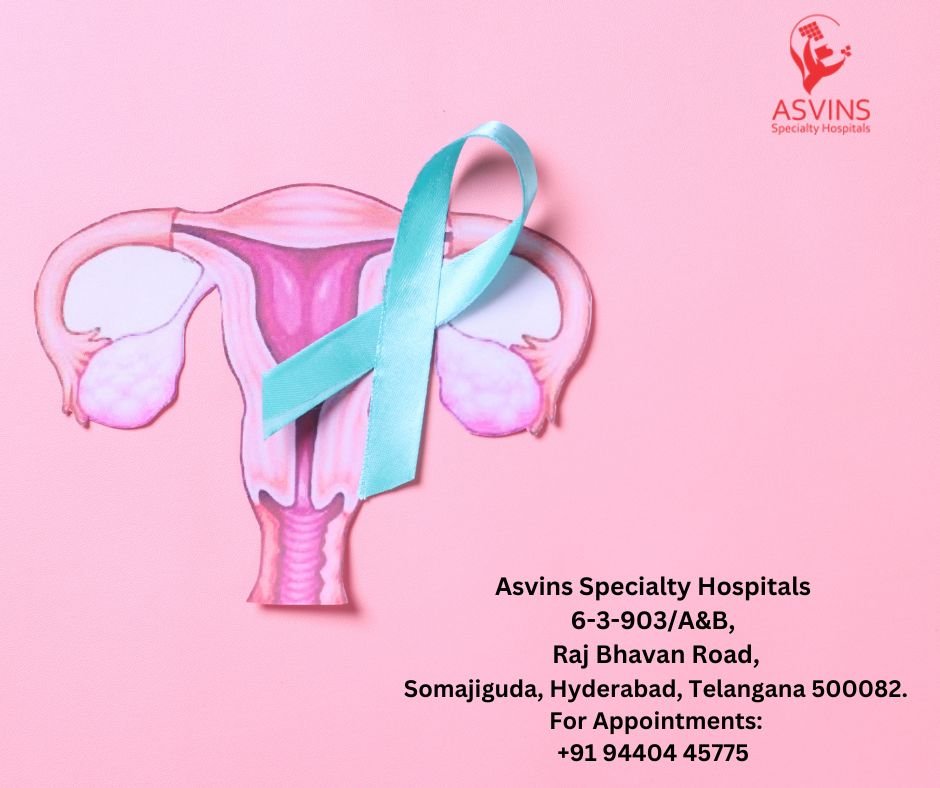

Advantages of Cervical Cancer Treatment
Cervical cancer treatment offers numerous advantages in improving patient outcomes and overall well-being. Early detection through screening enables timely intervention, increasing the chances of successful treatment. Various treatment modalities such as surgery, radiation therapy, and chemotherapy can be tailored to the specific stage and extent of the cancer, ensuring a personalized approach. Advanced techniques like minimally invasive surgery reduce post-operative discomfort and promote faster recovery.
Furthermore, targeted therapies and immunotherapies are becoming more prominent, effectively targeting cancer cells while minimizing damage to healthy tissues. Palliative care and pain management strategies enhance the quality of life for patients with advanced stages of cervical cancer. Supportive care, including counseling and psychological support, addresses the emotional and mental aspects of the disease. Overall, cervical cancer treatment not only aims at eradicating the disease but also emphasizes improved patient experience, reduced side effects, and enhanced survival rates through comprehensive and multidisciplinary approaches.
Why choose Asvins speciality Hospital for Cervical Cancer?
Asvins Specialty Hospital stands out as an excellent choice for cervical cancer treatment due to its comprehensive and patient-centered approach. The hospital boasts a team of highly skilled oncologists, gynecologists, and support staff experienced in treating cervical cancer at all stages. Cutting-edge technology and state-of-the-art facilities enable accurate diagnosis, precise staging, and advanced treatment planning.
Asvins places great emphasis on multidisciplinary collaboration, ensuring that each patient receives a personalized treatment plan tailored to their unique needs. The hospital offers a range of treatment options including surgery, radiation therapy, chemotherapy, and targeted therapies, allowing for a holistic approach to care.
Furthermore, Asvins excels in providing comprehensive supportive services such as psychological counseling, pain management, and rehabilitation, focusing on the patient’s physical and emotional well-being throughout the treatment journey.
Choosing Asvins Specialty Hospital for cervical cancer care means accessing top-notch medical expertise, advanced technology, and compassionate care, ultimately leading to better treatment outcomes and improved quality of life for patients battling cervical cancer.


What is Cervical Cancer?
The malignancy that develops in the cervix is called Cervical cancer. It usually begins with the gradual transformation of normal cervical cells into pre-cancerous lesions and eventually into cancerous cells. The primary cause is persistent infection with high-risk strains of the human papillomavirus (HPV), a sexually transmitted virus.
Cervical cancer often progresses slowly, allowing for early detection through regular Pap smears or HPV testing, which can identify abnormal cell changes before they become cancerous. Abnormal vaginal bleeding, pelvic pain, or pain during sexual intercourse are some of the Symptoms.
Untreated cervical cancer can spread to nearby tissues and, in advanced stages, may metastasize to distant organs. However, with early detection and proper medical intervention including surgery, radiation, and chemotherapy, the disease can be effectively treated. Vaccination against HPV is also a preventive measure, reducing the risk of cervical cancer by targeting the virus responsible for its development.
How Cervical Cancer causes?
Cervical cancer is primarily caused by persistent infection with certain high-risk strains of the human papillomavirus (HPV), a common sexually transmitted virus. HPV infects the cells of the cervix, leading to changes in their DNA that can result in the development of pre-cancerous and eventually cancerous lesions. These changes disrupt the normal cell cycle and regulatory mechanisms, causing the cells to grow and divide uncontrollably.
Factors that increase the risk of contracting HPV and subsequently developing cervical cancer include early onset of sexual activity, multiple sexual partners, weakened immune system, smoking, long-term use of oral contraceptives, and a family history of cervical cancer. Regular Pap smears or HPV testing can detect early cell changes and help in managing or treating the condition before it progresses to cancer.
Prevention strategies include HPV vaccination, safe sexual practices, and routine screenings to identify and manage any cell abnormalities before they develop into cancer.
Symptoms of Cervical Cancer:
Cervical cancer symptoms can vary, especially in the early stages. Common signs may include abnormal vaginal bleeding between periods, after sexual intercourse, or after menopause. Increased vaginal discharge, often tinged with blood, might also be noticed. Pelvic pain or pain during sexual intercourse could arise as the cancer progresses.
In advanced stages, symptoms can become more pronounced. These may include persistent lower back or pelvic pain, unintentional weight loss, fatigue, and swelling in the legs. It’s crucial to note that many of these symptoms can be caused by various other conditions as well, and their presence doesn’t necessarily indicate cervical cancer.
Regular screenings, such as Pap smears or HPV tests, are vital for detecting early changes in cervical cells before they become cancerous. If any of these symptoms persist or cause concern, seeking medical attention promptly is advised to ensure timely diagnosis and appropriate treatment if necessary.
Risk Factors for Cervical Cancer:
The primary risk factor is persistent infection with high-risk strains of the human papillomavirus (HPV), which is often transmitted through sexual contact. Early onset of sexual activity, having multiple sexual partners, and engaging in high-risk sexual behavior increase the likelihood of HPV exposure.
Other factors include a weakened immune system, which can be caused by conditions like HIV/AIDS or certain medications. Smoking tobacco is also linked to an increased risk of cervical cancer. Long-term use of oral contraceptives may slightly elevate the risk, as can having a family history of cervical cancer.
Lack of regular cervical screening and not getting vaccinated against HPV when eligible can also heighten the risk. Awareness of these risk factors is important, and preventive measures such as safe sexual practices, HPV vaccination, and routine screenings can significantly mitigate the likelihood of developing cervical cancer.
How is Cervical Cancer detected?
Cervical cancer is often detected through regular screenings that help identify abnormal changes in cervical cells before they become cancerous. The two primary methods of detection are the Pap smear and HPV testing.
Pap smear small sample of cells will be collected from the cervix and examine under a microscope for any abnormalities. This test can identify pre-cancerous or cancerous changes in the cervix cells.
HPV testing involves checking for the presence of high-risk strains of the human papillomavirus (HPV) in cervical cells. HPV is a major factor in the development of cervical cancer.
If abnormalities are detected in either test, further diagnostic procedures such as colposcopy (visual examination of the cervix) or biopsy (removing a small tissue sample for analysis) may be performed to confirm the presence of cervical cancer or pre-cancerous lesions. Early detection through these screenings is crucial for effective treatment and improved outcomes.
What are the stages of Cervical Cancer?
Cervical cancer is typically staged using the FIGO (International Federation of Gynecology and Obstetrics) system, which classifies the extent of the cancer’s progression. The stages range from 0 to IV, with further subdivisions denoted by letters (e.g., IIA, IIB) to provide more detail.
Stage 0 (Carcinoma in situ): Abnormal cells are found only on the surface of the cervix.
Stage I: Cancer is confined to the cervix.
Stage II: Cancer has spread beyond the cervix to nearby tissues but not to the pelvic wall or lower third of the vagina.
Stage III: Cancer has extended to the pelvic wall, lower third of the vagina, or caused kidney problems.
Stage IV: Cancer has spread to nearby organs, such as the bladder or rectum, or distant sites.
Staging guides treatment decisions and prognosis. Early-stage cancers are more likely to be treated successfully, whereas advanced stages might require a combination of surgery, radiation, chemotherapy, or targeted therapies for optimal management.
What are the Treatments for Cervical Cancer?
Cervical cancer treatment depends on factors like the stage of cancer, overall health, and patient preferences.
Surgery: Early-stage cancers can often be treated with surgery, which might involve removing the cervix (simple hysterectomy) or the uterus and surrounding tissues (radical hysterectomy). Lymph nodes might also be removed.
Radiation Therapy: This uses high-energy rays to target and destroy cancer cells. It can be used alone or in combination with surgery or chemotherapy, especially for larger tumors.
Chemotherapy: To kill cancer cells or stop their growth drugs are used. Before or after surgery, or in combination with radiation
Chemotherapy can be administered.
Targeted Therapy: These drugs specifically target certain molecules involved in cancer growth. They might be used alongside chemotherapy for advanced cases.
Immunotherapy: The immune system will be stimulated to recognize and attack cancer cells. This is being explored for advanced or recurrent cervical cancer.
Treatment plans are often personalized, combining different approaches based on the specific characteristics of the cancer and the patient’s health.
What is the Cost Of Cervical Cancer treatment?
The cost of cervical cancer treatment can vary widely depending on factors such as the stage of cancer, the treatment approach, the country or region, the healthcare facility, insurance coverage, and individual medical needs. Early-stage treatment options like surgery or localized radiation therapy tend to be less expensive than more advanced treatments involving extensive chemotherapy, targeted therapies, or prolonged hospitalization.
In the United States, treatment costs can range from thousands to tens of thousands of dollars, potentially even more for comprehensive care. Countries with universal healthcare systems might cover a significant portion of treatment costs. It’s essential to consult with healthcare providers and insurance companies to obtain accurate estimates of potential expenses.
Financial assistance programs, patient advocacy groups, and non-profit organizations can sometimes help alleviate the financial burden of cancer treatment. Open communication with healthcare professionals and exploring available resources can help patients make informed decisions about their treatment options and associated costs.
How to prevent or get rid of Cervical Cancer?
Preventing cervical cancer involves a combination of vaccination, safe sexual practices, and regular screenings.
HPV Vaccination: The HPV vaccine is highly effective in preventing infection with the high-risk HPV strains that cause most cervical cancers. It’s recommended for both males and females before becoming sexually active.
Safe Sexual Practices: Limiting sexual partners and using barrier methods like condoms can reduce the risk of HPV transmission and other sexually transmitted infections.
Regular Screenings: Pap smears or HPV tests help detect abnormal cervical cell changes before they become cancerous. Regular screenings as per medical guidelines can ensure early detection and timely intervention.
Avoid Smoking: cervical cancer risk can be increased because of Smoking. avoiding smoking can significantly reduce this risk.
Health Lifestyle: Maintaining a healthy immune system through balanced nutrition, regular exercise, and stress management can support overall well-being and cancer prevention.
Regular check-ups, open communication with healthcare providers, and awareness of risk factors are vital components of preventing cervical cancer. Early detection and adoption preventive measures can contribute to reducing the incidence and impact of this disease.


Why you should not delay Cervical Cancer treatment.
Delaying cervical cancer treatment can have serious consequences on both the effectiveness of treatment and the overall well-being of the patient. Cervical cancer is often slow-growing, but early stages may be asymptomatic. As the disease progresses, it becomes more difficult to treat successfully and may spread to other parts of the body, reducing the chances of a favorable outcome.
Early treatment offers better prospects for less invasive procedures, lower recurrence rates, and higher survival rates. Delaying treatment can result in the need for more aggressive treatments like extensive surgery, higher doses of radiation, or intensive chemotherapy, potentially leading to more side effects and reduced quality of life.
Prompt treatment also prevents the cancer from affecting other vital organs. Regular screenings and immediate medical attention upon detection of any abnormal symptoms are crucial in ensuring the most effective treatment options and the best possible prognosis for individuals diagnosed with cervical cancer.
Benefits of Cervical Cancer treatment
Cervical cancer treatment offers a range of benefits that contribute to improved health outcomes and overall well-being.
Increased Survival: Early detection and timely treatment significantly enhance the chances of survival, especially in the early stages of cervical cancer.
Reduced Complications: Treating cervical cancer in its early stages reduces the risk of complications, including the spread of cancer to nearby tissues or distant organs.
Preserved Fertility: Depending on the stage and treatment, some options like fertility-sparing surgery or targeted therapies may help preserve fertility for women who wish to have children in the future.
Enhanced Quality of Life: Effective treatment reduces cancer-related symptoms such as pain, bleeding, and discomfort, improving overall quality of life.
Less Invasive Interventions: Early-stage treatments tend to be less invasive, resulting in faster recovery times, shorter hospital stays, and fewer side effects.
Personalized Approach: Treatment plans are tailored to the individual, optimizing the benefits while considering the patient’s overall health, preferences, and goals.
Emotional Well-being: Successful treatment alleviates emotional stress, anxiety, and uncertainty associated with a cancer diagnosis. Considering these benefits, seeking prompt medical attention and adhering to recommended treatment plans are essential for maximizing the positive outcomes of cervical cancer treatment.
1. Does Insurance cover Cervical Cancer Treatment?
Typically, Most insurances cover Cervical Cancer Treatment in Hyderabad. For more details, call on +91 9440445775.
2. What is the recovery time after the Cervical Cancer Treatment?
It usually take 30-45 days for recovery after the surgery. It is adviced not to make any engagements upto 45 days after Surgery.
3. Are there any side effects of Cervical Cancder treatment?
Yes, cervical cancer treatment can have side effects. Surgery may cause pain, infection, or bleeding. Radiation therapy might lead to skin irritation, fatigue, and bowel or bladder issues. Chemotherapy can result in nausea, vomiting, hair loss, and lowered blood counts. Targeted therapies might have specific side effects related to the drugs used. Side effects vary based on the treatment type, duration, and individual response. Medical teams work to manage these effects through medications, lifestyle adjustments, and support. Open communication with healthcare providers helps mitigate side effects and enhance the overall treatment experience.
4. What is Cervical Cancer Embolisation?
Cervical cancer embolization is a minimally invasive procedure where blood vessels supplying the cancerous tumor in the cervix are blocked using substances like particles or coils. This restricts the tumor’s blood supply, inhibiting its growth and facilitating other treatments. It can be used as part of a comprehensive approach to manage advanced cervical cancer.
5. What is the Cost of Cervical Cancer Treatment in Hyderabad?
The cost of cervical cancer treatment in Hyderabad can vary depending on factors such as the stage of cancer, treatment approach, healthcare facility, and individual patient needs. For Cost estimates call on +91 94404 45775
6. What is the best treatment for Cervical Cancer?
The best treatment for cervical cancer depends on factors like the stage of cancer, the patient’s health, and individual preferences. Treatments include surgery, radiation therapy, and chemotherapy. A multidisciplinary approach that combines these modalities often provides the most effective outcome, tailored to the patient’s specific situation. Consulting medical professionals is essential for personalized treatment recommendations.
7. Which is the best hospital for Cervical Cancer Treatment?
Asvins Hospital is renowned for its excellence in providing comprehensive cervical cancer treatment. With a team of experienced oncologists and facilities, Asvins Hospital offer personalized care tailored to each patient’s needs. multidisciplinary approach combines surgery, radiation therapy, and chemotherapy to ensure the best outcomes. Asvins Hospital’s commitment to cutting-edge technology, compassionate care, and patient well-being makes it a trusted choice for those seeking effective and comprehensive cervical cancer treatment.
Finding the best cervical cancer hospital like Asvins Hospital, in Hyderabad involves thorough research. Consider Asvins Hospital with experienced oncologists, advanced diagnostic …
A Cervical Cancer PowerPoint Presentation (PPT) is a valuable resource for raising awareness and educating the public about cervical cancer. These presentations …
सर्वाधिक प्रमुख महिला कैंसर का अर्थ: सर्वाधिक प्रमुख महिला कैंसर, जिसे एक बार्वीगिकल कैंसर के रूप में भी जाना जाता है, महिलाओं …
Cervical cancer ke lakshan ko samajhna mahilaon ke swasthya ke liye kritim hai, kyun ki samay par unhe pehchan karne se is …
Cervical cancer is a significant health concern for women in India, but fortunately, there are vaccines available to prevent it. One of …
Cervical Cancer SlideShare: A Comprehensive Resource Cervical cancer SlideShare presentations serve as valuable educational tools to disseminate critical information about cervical cancer. …
सर्वाधिक प्रमुख महिला कैंसर के संकेत: सर्वाधिक प्रमुख महिला कैंसर के संकेतों की पहचान महत्वपूर्ण है ताकि समय पर उपचार किया जा …
सर्वाधिक प्रमुख महिला कैंसर: सर्वाधिक प्रमुख महिला कैंसर: “सर्वाधिक प्रमुख महिला कैंसर: सर्वाधिक प्रमुख महिला कैंसर: सर्वाधिक प्रमुख महिला कैंसर: सर्वाधिक प्रमुख …








